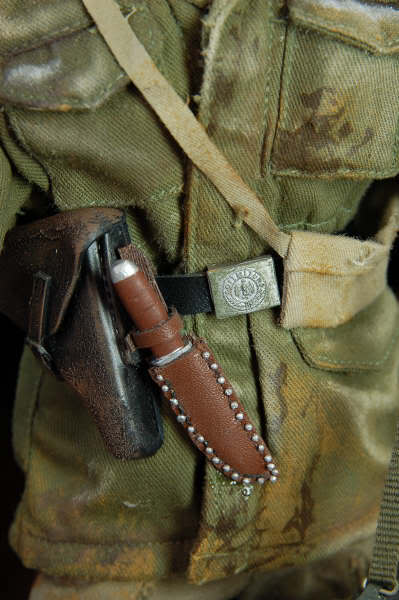Siege of Bastogne
Battle of Bastogne
The Siege of Bastogne was a smaller battle in and around the Belgian town of Bastogne, during the larger battle of the Bulge. Success of the German offensive, seizure of the harbor at Antwerp with encirclement and destruction of Allied armies, required the German Army mechanized forces to use the roadways in order to maintain the speed of the offensive. All seven main roads in the Ardennes mountain range converged on the small town of Bastogne. Control of the crossroads of Bastogne was vital for both sides since Allied control acted to reduce the speed of the German advance while German control acted to increase the speed of their advance and improved resupply of the German columns as the poor weather conditions made cross country travel difficult. The battle lasted from mid-December 1944 to January 1945.
Deployment
As Allied command determined that the German army was attacking through the Ardennes into Belgium, they began a series of troop movements to reinforce key points. As part of the troop redeployments to blunt and stop the German attack, the American 101st Airborne Division, Combat Command B of 10th Armored and the 463d Field Artillery Battalion were deployed to Bastogne.
Retreat from Noville
On the 19th and 20th of December, the 1st Battalion of the 506th Regiment, supported by Team Desobry of the 10th Armored, engaged the 2nd Panzer Division at Noville, northeast of Foy. Together, they destroyed at least 30 enemy tanks and inflicted casualties of between 500 and 1,000. This delay gave the 101st Airborne Division troops enough time to set up their defences at Bastogne. By the time the battalion pulled back beyond Foy on the 20th, it had lost 13 officers and 199 enlisted men, out of about 600 troops.
Battle
The Allied forces were soon surrounded by elements of the German Fifth Panzer Army. The Allied soldiers were outnumbered and lacking in cold-weather gear, ammunition, food, medical supplies, and leadership (as many officers, including General Maxwell Taylor, were elsewhere). Due to some of the worst winter weather in years, the surrounded Allied forces could not be resupplied by air nor was tactical air support available, requiring the defenders to make the most of what was already available. However, the German military strategy involved probing different points of the defensive perimeter in sequence, rather than attacking with a single large force (essentially violating the military principle of "mass"). This played into the American advantage of interior lines of communication and tended to dissipate the German advantage of superior numbers. As the German forces searched for a weakness in the defensive lines, the defenders were able to reposition artillery and machine gun positions to meet each successive assault.
Artillery from the 463rd Battalion consisted of 105 and 155 mm howitzers. These were active in the first few days of the siege, firing at all German attempts to break through the lines. However, by the twenty-third, ammunition had been almost completely exhausted. The remaining rounds were reserved for antitank purposes in the event of a German Panzer attack. The battalion did not resume shelling of German lines until the first Allied supply drop came, which was on that same day.
When the weather improved on December 23, Allied planes resumed flying, delivering much-needed supplies of food and ammunition to the Allied forces defending Bastogne as well as providing tactical air support throughout the area.
Allied control of Bastogne was a major obstacle to the German armored advance and the morale of Allied forces elsewhere on the Western Front was boosted by news of the stubborn defense of the besieged town.
Breaking of the Encirclement
Elements of General George Patton's Third Army, spearheaded by Lt. Col. Creighton Abrams of the 37th Armor Regiment, succeeded in punching through to Bastogne, augmenting the defenders the day after Christmas. The 101st's ground communications with the American supply dumps were restored, and the wounded were evacuated to the rear.
With the encirclement broken, the men of the 101st expected to be relieved, but were given orders to resume the offensive, and were not taken off the front until Noville had been recaptured.
The most famous quote of the battle came from the 101st’s acting commander, Brigadier General Anthony McAuliffe. When awakened by an enemy request for his surrender, he replied “NUTS!”.
THE FIGURE

UNIFOM:MIXTURE OF DID-DML AND NLM
HS-REPAINT:DML
PRIVATE KNIFE:CUSTOM
PLEASE NOTE THE GERMAN BELT(KOPPEL)AND THE LUGERHOLSTER!!
HOPE YOU LIKE THIS GUY!!












Happy Modelling!!!





